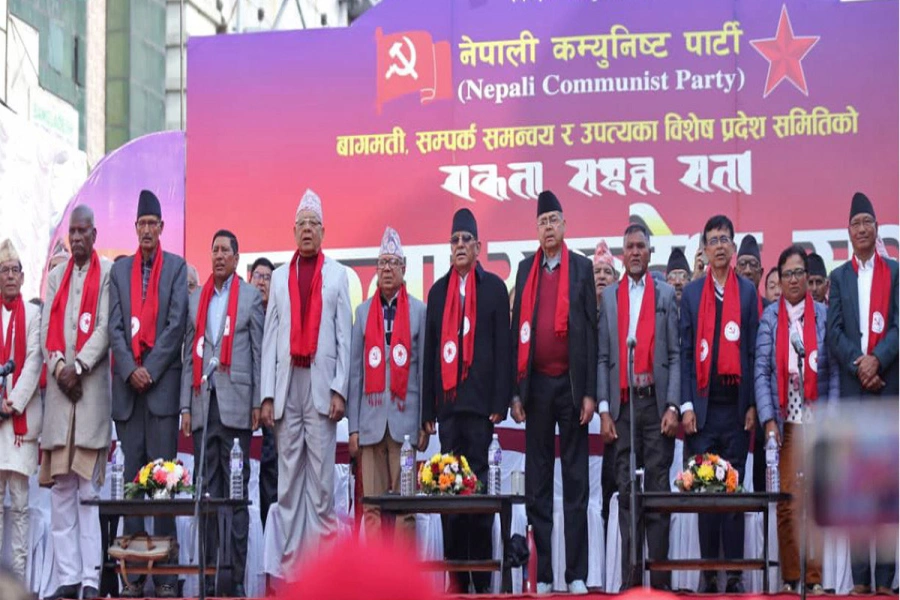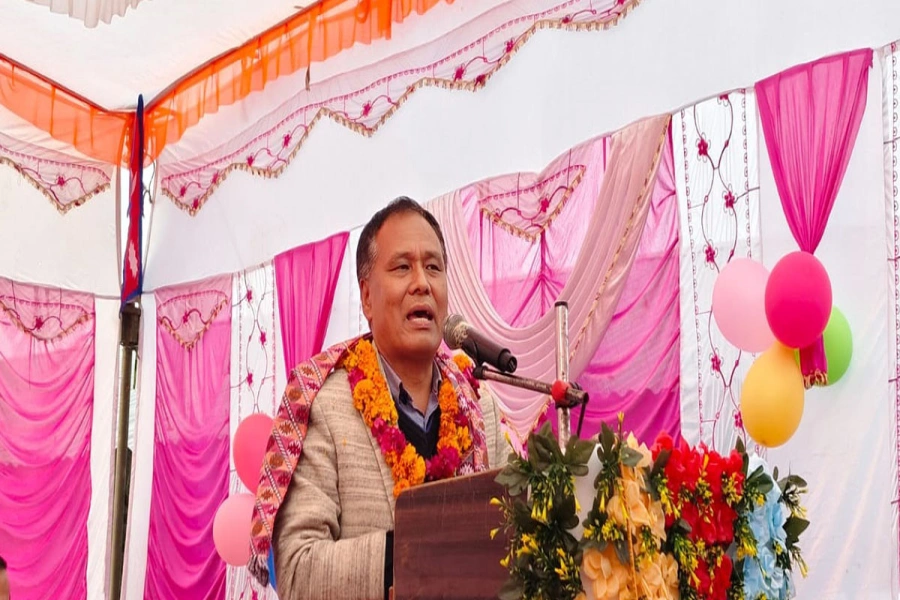Although land reform has been a priority area of the government, land use planning has always remained under the shadow of revenue collection and land distribution.
Agriculture is fundamentally a land based activity and is, therefore, heavily dependent on land reform. Its effect on agricultural productivity should, generally, be positive but in Nepal it has either affected negatively or there is no effect. In fact, productivity is decreasing due to negligence in soil management and division of cultivable land into small pieces. Similarly, unplanned settlement is also responsible for decreasing production. Furthermore, soil erosion is exceedingly high in hilly and mountainous areas. Topsoil loss has been reported as high as 87 tons per hectare per year on sloping terraces. When the top soil is lost, the land is degraded. The heavy grazing pressure in the mountain areas has also sped up the soil erosion. So far, efforts on land reform are focused on land administration, which meant collecting revenue and redistributing the land to the so-called landless. Soil management aspect is totally neglected.
Land types
Up to 1950, lands in Nepal were categorized into five groups on the basis of land tenure—Raikar, Birta, Guthi, Kipat and others. Raikar land denoted individual’s private property in which he/she pays the tax to the government and has a full right in terms of selling, using, inheriting, transferring, dividing and leasing. Birta means granted land to individuals to enable them to make a living. Birta land had no absolute ownership rights. Birta land was converted into Raikar in 1959 through the implementation of Birta Abolition Act 1959. Kipat was a type of community ownership on the land, under which certain group (s) used to control it jointly, and state had no authority. Land assigned for charitable, religious or philanthropic institutions came under Guthi tenure.
Land (Survey and Measurement) Act 1963 classified land as Abal, Doyam, Sim, and Chahar. Furthermore, the eighth amendment of Land Act 1963 in 2001 and Land (Survey and Measurement) Rules 2002 has improved this grading system of lands as: (a) Agricultural land (b) Commercial and Residential Areas.
Land Reform: Lacking Holistic Approach

A National Action Plan (NAP) 2002 was prepared for a number of activities to be performed to combat land degradation through soil conservation and agro forestry. Despite the fact that the land degradation was prioritized as one of the most urgent issues needing immediate program implementation, this action plan could not be implemented effectively due to various reasons. In fact, implementation of land management related policy and acts always remained very weak.
Recently, the government of Nepal has issued a Land Use Policy (2015) outlining land use classification. Land use classification should be carried out on the basis of land use act and so
the Land Use Act (2019) has come into force. As per the Act, land has been classified into 10 categories: agricultural; residential; commercial; industrial; mining and mineral; forest; river, stream, pond and wetland; public use; cultural and archaeological; and others. As per the Act, three tiers of the government should constitute councils to bring provisions of the Act into implementation. But these councils are not yet formed.
Only about one third of agricultural and forestland of the nation was granted to private individuals by 1950 and the remaining belonged to the rulers themselves. At present predominant form of land tenure is Raikar, followed by the Guthi.
Need for a holistic approach
Nepal is a land scarce country in terms of availability of cultivable land where per household land availability is about 0.6 ha. This land holding of a household is also fragmented into 3.3 pieces.
A large area of land (86 percent of the land holding and 83 percent of land area) is owned by individuals and is owner-cultivated. According to FAO, there is doubling of population in every 30 years and so land availability per capita is also declining more or less at the same rate as there is less scope to move to non-farm sector. There is no option other than increasing land productivity.
When we relate land reform to agricultural productivity, two aspects are very important: soil fertility and land use. Regarding soil fertility, land reform in Nepal from the very beginning to date has totally ignored it. But in the present context of increasing population, utilization and sustainable management of the land is a very crucial factor for increasing agricultural productivity. The problem of declining productivity and deterioration of soil fertility is particularly serious in rain fed areas where marginal farming and extended fallow period are widespread.
Sustainable land management is a complex process which calls for a holistic approach. An interdisciplinary and inter-institutional co-ordination mechanism is a must but it is either lacking and/or ineffective at present. In order to reverse land degradation processes, we require appropriate incentives and actions to change the behavior of the land users. In Nepal, the principal land users are the small farmers. Majority of them derive their living from fragmented plots of land.
The other land related factor responsible for the negative impact on agricultural production is the pattern of land use. A proper land use system is required for increasing agricultural production, environmental sustainability and bio-diversity conservation. Until recent past, there were no strict norms regarding the land use system which led to haphazard location of settlements and industries in fertile land where food production was very feasible. Decentralized system of land use planning is lacking.
So the provincial and local governments should give priority to develop land use plans in consultation with the stakeholders. But the recently presented budget of all provinces has overlooked this issue, which may result in low production and productivity of agriculture in the years to come. Although land reform has been a priority area of the government in white paper, land use planning has always remained under the shadow of revenue collection and land distribution. Land development for farming is lacking. Because of this, land productivity in both smaller as well as large holdings is declining.
Degradation of farmland and erosion are occurring due to both bio-geological factors and human causes. River cutting of farmland is another problem, especially in Tarai and low-hills. Mid-hills and mountains are badly affected by landslides.
Therefore effective implementation of land use policy in a holistic approach is essential. There should be consensus among major political parties on its modality of implementation. Measures should be taken immediately to discourage keeping farmland fallow and using agricultural land for other purposes. Emphasis should be given to grow tree crops, particularly fruit crops, in the sloppy lands of hills and mountains.







































